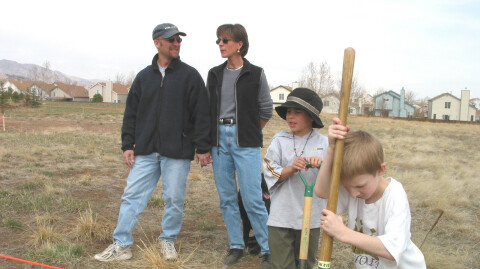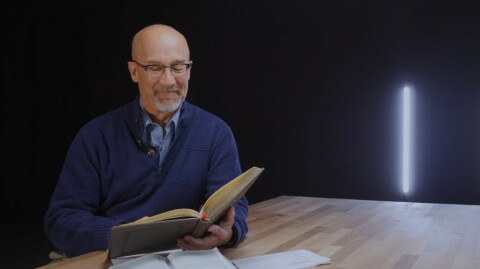
Just in time for the new year and New Year’s resolutions, here are five book recommendations.
- A Burning in my Bones: The Authorized Biography of Eugene H. Peterson by Winn Collier (Waterbrook: 2021). Pastor and writer John Mark Comer endorses this biography with words that express my own heart toward Eugene Peterson: “In the time of a generation-wide breakdown of trust with leaders in every sphere of society, Eugene’s quiet life of deep integrity and gospel purpose is a bright light against a dark backdrop. For years his life has been the North Star for my life and pastoral call. This seminal biography is an unmistakable call to quiet resistance against the way of the world and, when necessary, the way of the church. Only read this book if you’re ready to live differently.”
Excerpt:
In a November 2001 People of the Year interview, Rolling Stone asked Bono what book he was reading. “A translation of Scriptures – the New Testament and the Books of Wisdom,” he said, “that this guy Eugene Peterson has undertaken. It has been a great strength to me. He’s a poet and a scholar, and he’s brought the text back to the tone in which the books were written.”
When a friend asked Eugene if he knew Bono had given him a glowing endorsement, Eugene responded, “Who’s Bono?” Soon, clippings poured in from around the globe. “I can’t believe the number of friends and acquaintances I have who read Rolling Stone,” Eugene jested. “I thought all they read was the Bible…”
Jack Heaslip, an Anglican clergyman who’d taught the U2 boys in day school and then became the band’s chaplain, contacted Eugene to see if he would travel to Chicago for a visit with Bono. Later, in an interview with Dean Nelson for Point Loma Nazarene University’s Writer’s Symposium by the Sea, Eugene explained, “I was finishing up the Old Testament at the time [for The Message], and I really couldn’t do it.” Dean responded, incredulous, “You may be the only person alive who would turn down the opportunity [to meet Bono] just to make a deadline. I mean, come on.” The crowd broke into laughter before Dean offered an addendum. “It’s Bono, for crying out loud.”
Eugene paused for a moment. “Dean, it was Isaiah.” The crowd roared.
As the full Message released, Bono sent a personal video. Though Eugene was still oblivious, his grandkids went bonkers. The grainy video, shot in a spartan living room, showed a young Bono in a lime-green chair offering simple words: “Mr. Peterson, Eugene, my name is Bono. I’m singing with the group U2 and wanted to video message you my thanks – and our thanks in the band – for this remarkable work you’ve done. There’ve been some great translations, some very literary translations, but no translations that I’ve read that speak to me in my own language. So, I want to thank you for that.” The final words can be heard properly only in Bono’s warm, tender Irish brogue: “Take a rest now, won’tcha? Bye.” - A Burning in My Bones, 257-257.
- Prayer in the Night: For Those Who Work or Watch or Weep by Tish Harrison Warren (IVP: 2021). In this memoir, Anglican priest Tish Harrison Warren writes of how, when she could not pray due to deep loss in her journey, she began to say nightly the Compline from the Book of Common Prayer:
Keep watch, dear Lord, with those who work, or watch, or weep this night,
And give your angels charge over those who sleep.
Tend the sick, Lord Christ; give rest to the weary,
Bless the dying, soothe the suffering, pity the afflicted,
Shield the joyous; and all for your love’s sake. Amen.
This book, in prose that is both powerful and vulnerable, is both the wrestling with and application of each phrase of this prayer to a hurting heart. She stubbornly holds on to trusting that God remains good even when life is not. This is a book that I will reach for again because, again, life will be hard. This is a book that I will keep giving to friends.
Excerpt:
Around a decade ago, my marriage was in a fragile place. Jonathan and I were both miserable, lonely, and weary from years of fighting. We had very young children and long lists of grievances and recriminations. So after months of counseling, we did the only thing we knew to do: we asked friends to pray, we dropped our kids off with Jonathan’s mom, and we drove to Chattanooga, Tennessee. We hiked, and we ate great food. And we fought a lot, and cried, and talked and yelled, and hashed things out, then hiked some more, and yelled and talked and cried some more. In a gift store in Chattanooga, we found a magnet that now hangs on our fridge. It reads: “Everything will be okay in the end. If it’s not okay, it’s not the end.”
We bought it as a statement on our marriage – we will work this out, we will listen, forgive, and learn to love, or we will die trying [Tish footnotes here that this does not mean staying in an abusive marriage]. There was very little about our circumstances at the time that made us optimistic, but the promise of the magnet (however unintentionally) is not for this life only – it is eschatological. It expresses our hope that though “in this world we will have trouble,” but Jesus has “overcome the world” (John 16:33)…
Christians believe this cosmic reordering has already begun in the resurrection of Christ. Jesus’ resurrection is the sole evidence that love triumphs over death, that beauty outlives horror, that the meek will inherit the earth, that those who mourn will be comforted. The reason I can continue watching and waiting, even as the world is shrouded in darkness, is because the things I long for are not rooted in wishful thinking or religious ritual but are as solid as a stone rolled away. – Prayer in the Night, 56-57.
- Paul: A Biography by N.T. Wright (HarperOne: 2018). One of our preeminent New Testament scholars absorbs the chronology of The Acts of the Apostles in the New Testament along with Paul’s letters to construct a compelling, humanizing life of the great theologian, writer and missionary. At over four hundred pages, it’s a labor of love to read, yet Wright’s wit, insight and storytelling keep the pages turning. It would make a great companion to Part 2 of our Book of Acts series this winter.
Excerpt:
In the first chapter of Ephesians [Paul] insists that the entire divine plan “was to sum up the whole cosmos in the king – yes, everything in heaven and on earth, in him.” Here in the second chapter of the letter, he explains the purpose of “being saved by grace through faith”:
God has made us what we are. God has created us in King Jesus for the good works that he prepared, ahead of time, as the road we must travel. – Ephesians 2:10
God has made us what we are; or, to bring out a different but equally valid flavor of the Greek, we are God’s poetry, God’s artwork. God has accomplished, and will accomplish, the entire new creation in the Messiah and by the Spirit. When someone believes the gospel and discovers its life-transforming power, that person become a small but significant working model of that new creation…
Those are who are grasped by grace in the gospel and who bear witness to that in their loyal belief in the One God, focused on Jesus, are not merely beneficiaries, recipients of God’s mercy; they are also agents. They are poems in which God is addressing the world, and, as poems are designed to do, they break open existing ways of looking at things and spark the mind to imagine a different way to be human. - Paul: A Biography, 407.
- From Strength to Strength: Finding Success, Happiness, and Deep Purpose in the Second Half of Life by Arthur C. Brooks (Portfolio/Penguin, 2022). Harvard professor Arthur Brooks takes the title from Psalm 84:5-7:
Blessed are those who strength is in you, whose hearts are set on pilgrimage.
As they pass through the Valley of Baka, they will make it a place of springs;
The autumn rains also cover it with pools.
They go from strength to strength, till each appears before God in Zion.
Brooks’ follows the ancient tradition of navigating the journey of life from the first half of life (our strength of youth) to the second half (our strength of wisdom). Not a Christian book per se, yet Brooks is applying the wisdom of Ecclesiastes - life is like a vapor through which we pass quickly. Wise people come to terms with this, not by fighting against the inevitable decline, but rather by devoting the back half of life to serving others with your wisdom. “Get old sharing the things you believe are most important. Excellence is always its own reward, and this is how you can be most excellent as you age” (page 40). Indeed, and Jesus would call this excellence - “discipleship.”
Excerpt:
Unless you follow the James Dean formula – “Life fast, die young, leave a good-looking corpse” – you know that your professional, physical, and mental decline is inevitable. You probably just think it’s a long, long way off.
You’re not alone in thinking this. For most people, the implicit belief is that aging and its effect on professional performance are something that happen far in the future. This attitude explains all kinds of funny results. For example, when asked in 2009 what “being old” means, the most popular response among Americans was “turning eighty-five.” In other words, the average American (who lives to seventy-nine) dies six years before entering old age.
Here is the reality: in practically every high-skill profession, declines sets in sometime between one’s late thirties and early fifties. Sorry, I know that stings. And it gets worse: the more accomplished one is at the peak of one’s career, the more pronounced decline seems once it has set in…
Take scientists. Benjamin Jones, a professor of strategy and entrepreneurship at the Kellogg School of Management at Northwestern University, has spent years studying when people are most likely to make prizewinning scientific discoveries and key inventions. Looking at major inventors and Nobel winners going back more than a century, Jones finds that the most common age for great discovery is one’s late thirties. He shows that the likelihood of a major discovery increases steadily through one’s twenties and thirties and then declines dramatically through one’s forties, fifties, and sixties. There are outliers, of course. But the probability of producing major innovation at age seventy is approximately equal to what it was at age twenty – about zero. – From Strength to Strength, 4-5.
- How To Inhabit Time: Understanding the Past, Facing the Future, Living Faithfully Now by James K.A. Smith (Brazos Press: 2022). Jamie Smith is a professor of philosophy at Calvin University, a prolific writer and public theologian. I pay attention to his books and read most of them. His voice is both challenge and consolation to the church as we engage a secular culture always on the hunt for enchantment. This book is a theological reflection on what it means to live “in time.” Annie Dillard once wrote, “How we spend our days is, of course, how we spend our lives.” She means that lives well lived relentlessly pay attention to and mark particular moments. Christians are formed by a specific history and drawn into God’s future by his Spirit all the while standing in the present and only the present. Staying in the present is the mattering. This book has reminded me to do what the missionary martyr, Jim Elliot, wrote in his journal: “Wherever you are, be all there.”
Excerpt:
In 2019, after a long and tormented hiatus, Tiger Woods roared back to his winning ways in professional golf. At the time, a photojournalist pointed out a stark difference between an early win in 1997 and his latest triumph in 2019. The image of the eighteenth hole in the 1997 photograph has the feel of a Renaissance masterpiece: a portrait of a sea of faces as if illumined by Caravaggio, variously rapt, gasping, roaring, all fixated and focused on the ball as it plummets into the hole, securing the win. The gallery watching was like one organism. No one there will ever forget Tiger pumping his fist in the air, a young conqueror.
This image was then contrasted with the 2019 event. Tiger is still surrounded by a sea of people on that final hole, but their eyes are elsewhere: they are looking at their smartphones as they freeze this moment in a photograph, focused on clicking at just the right instant. The faces are obscured by upstretched arms, a thousand tiny replications of the event float above their heads. Bent on capturing the moment, they are no longer present to it. Determined to hold on to the experience, they miss the opportunity to experience it. The moment is lost by the desire to seize it.
This contrast reminded me of a remarkable insight in photographer Sally Mann’s memoir, Hold Still. She is reflecting on the death and loss of two beloved men in her life: her father and a dear friend, artist Cy Twombly. Her memories of Twombly are vivid: she can immediately recall “his drawling voice, his wrinkled face, the gap between the front teeth – Cy is right here.” His presence can be invoked by memory itself. But then this surprising observation from a professional photographer: “I am convinced that the reason I can remember him so clearly and in such detail is because I have so few pictures of him.” Twombly lives in her, a companion of memory, in a way very different from her father, she admits: “Because of the many pictures I have of my father, he eludes me completely. In my outrageously disloyal memory he does not exist in three dimensions, or with associated smells or timbre of voice… I don’t have a memory of the man; I have a memory of a photograph.” The father captured on film is lost to her; the friend remembered is present. Mann diagnoses why our ability to freeze-frame reality is actually a loss:
Before the invention of photography, significant moments in the flow of our lives would be like rocks placed in a stream: impediments that demonstrated but didn’t diminish the volume of the flow around which accrued the debris of memory, rich in sight, smell, taste, and sound. No snapshot can do what the attractive mnemonic impediment can: when we outsource that work to the camera, our ability to remember is diminished and what memories we have are impoverished (Sally Mann, Hold Still, 300-302).
I have tried to absorb Mann’s insights into my own rhythms and practices. It’s mostly a matter of giving myself opportunities to remember rather than turning every experience into something to be archived. The penchant to capture every instant of beauty onto my iPhone becomes a way of losing the world. Rather than living with me in my visceral memory, all the joy and beauty I experience ends up buried in a photos folder I rarely look at. The result is a diminished experience of both present and past. When I’m bent on capturing the moment in a snapshot, I am less present; I’m fixated on a future memory – which ends up being a sad substitute for an emotion or vision I can carry in the caverns of my soul.
So I’ve adopted a simple practice: I intentionally leave my phone behind when I venture into places of beauty or when I’m anticipating a momentous event. I want to be present to the present precisely so it will be alive to me as future memory… I want to be present to the present now without the anxiety of losing it. By giving myself over to the moment, I can carry these joys with me in ways I couldn’t have imagined. – How To Inhabit Time, 99-100.
Five good books. “Where the old coat and buy the new book” – Austin Phelps.
Happy reading and comment below if you've read one of these or are planning to pick one up!




2 Comments
Thanks for this presentation & review of 5 good books to read. I’m appreciative and definitely wanting to tackle at least some of these. I especially want to get my hands on the second one you wrote about…”Prayer in the Night: For Those Who Work or Watch or Weep”. Yes, I want to read it myself, but I feel an urgency to get it in order to give it to my son Shawn. Any suggestions? Do you think Mardels would have it? I’m hoping also to share a bit about Eugene Peterson with Shawn. I love reading from The Message, though I’ve been mildly scolded-maybe ‘cautioned’ is the better word- for trusting this version, as it is not a ‘true translation’ , but rather a paraphrase of Scripture! I know Shawn would especially enjoy reading the excerpt you shared here about Peterson… the Bono “incident’, if you will!
Ok… I’m rambling! Thanks, Larry. I very much appreciate and respect you input on so many levels. Blessing in 2023! See you soon!
Thanks Larry. These are excellent, even if I don't get to all of them.